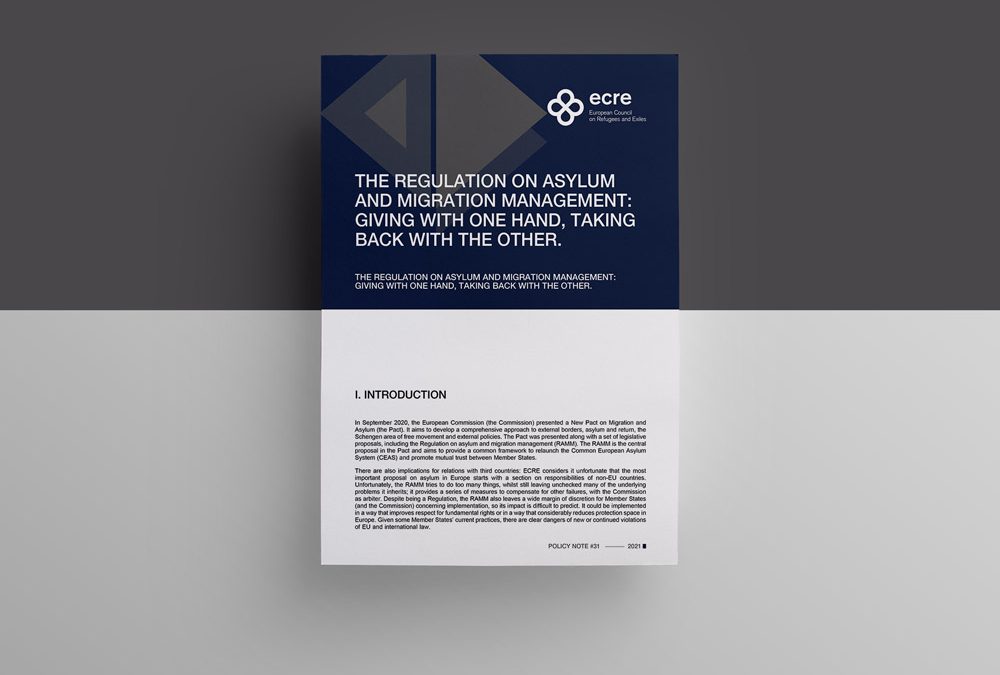This Policy Note offers ECRE’s assessment and recommendations in relation to the Regulation on asylum and migration management (RAMM)
In September 2020, the European Commission (the Commission) presented a New Pact on Migration and Asylum (the Pact). It aims to develop a comprehensive approach to external borders, asylum and return, the Schengen area of free movement and external policies. The Pact was presented along with a set of legislative proposals, including the Regulation on asylum and migration management (RAMM). The RAMM is the central proposal in the Pact and aims to provide a common framework to relaunch the Common European Asylum System (CEAS) and promote mutual trust between Member States.
There are also implications for relations with third countries: ECRE considers it unfortunate that the most important proposal on asylum in Europe starts with a section on responsibilities of non-EU countries. Unfortunately, the RAMM tries to do too many things, whilst still leaving unchecked many of the underlying problems it inherits; it provides a series of measures to compensate for other failures, with the Commission as arbiter. Despite being a Regulation, the RAMM also leaves a wide margin of discretion for Member States (and the Commission) concerning implementation, so its impact is difficult to predict. It could be implemented in a way that improves respect for fundamental rights or in a way that considerably reduces protection space in Europe. Given some Member States’ current practices, there are clear dangers of new or continued violations of EU and international law.
Like Dublin IV before it, the overall approach of the RAMM to responsibility allocation is to maintain the status quo but add “corrective” solidarity mechanisms intended to compensate for the outcomes of the standard rules and make them fairer. A deeper overhaul of the criteria on sharing of responsibility is vital to address the system’s dysfunctionalities. Although the RAMM includes some positive elements, these are often outweighed by related negative changes – it often gives with one hand and takes back with the other, such as on family reunification. The Pact is not going away, however, so ECRE’s recommendations focus on the parts of the RAMM that should be saved, and those to withdraw. Finally, the RAMM is a long and complex instrument, and not all aspects are covered here, so this policy note should be read in conjunction with the detailed Comments paper.
For more detailed information: please read ECRE Comments on the Commission Proposal for a Regulation on asylum and migration management COM (2020) 610 2020/0279 (COD).
Photo: ECRE
This article appeared in the ECRE Weekly Bulletin. You can subscribe to the Weekly Bulletin here.

